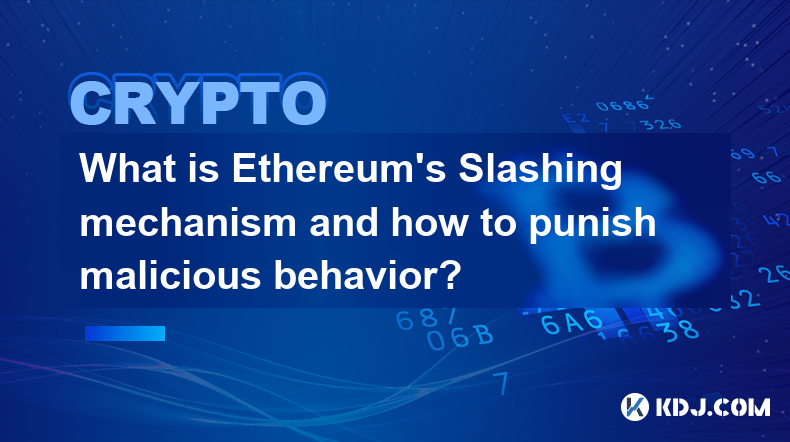-
 Bitcoin
Bitcoin $82,754.6383
1.55% -
 Ethereum
Ethereum $1,569.0262
-0.53% -
 Tether USDt
Tether USDt $0.9994
-0.02% -
 XRP
XRP $2.0109
0.44% -
 BNB
BNB $583.0603
1.10% -
 Solana
Solana $119.7962
6.00% -
 USDC
USDC $0.9997
-0.02% -
 Dogecoin
Dogecoin $0.1585
1.64% -
 TRON
TRON $0.2373
-1.23% -
 Cardano
Cardano $0.6251
0.96% -
 UNUS SED LEO
UNUS SED LEO $9.4102
-0.05% -
 Chainlink
Chainlink $12.5775
2.13% -
 Avalanche
Avalanche $19.1234
5.26% -
 Toncoin
Toncoin $2.9404
-1.09% -
 Hedera
Hedera $0.1721
-1.29% -
 Stellar
Stellar $0.2344
0.37% -
 Sui
Sui $2.1974
1.29% -
 Shiba Inu
Shiba Inu $0.0...01199
0.67% -
 MANTRA
MANTRA $6.4186
-1.24% -
 Bitcoin Cash
Bitcoin Cash $302.2438
2.84% -
 Litecoin
Litecoin $76.2088
3.58% -
 Polkadot
Polkadot $3.5258
-0.04% -
 Dai
Dai $0.9999
-0.01% -
 Bitget Token
Bitget Token $4.2831
0.54% -
 Ethena USDe
Ethena USDe $0.9986
-0.01% -
 Hyperliquid
Hyperliquid $15.1681
9.85% -
 Pi
Pi $0.6080
2.01% -
 Monero
Monero $201.7535
-0.17% -
 Uniswap
Uniswap $5.2079
1.42% -
 OKB
OKB $53.0751
-0.36%
How to sell FLOW coin safely? Operation process of safe sale of FLOW coin
For a secure FLOW coin sale, choose a reputable exchange like OKX or Binance, create an account, place a sell order (market, limit, or stop-limit), and monitor your order before withdrawing the proceeds.
Oct 23, 2024 at 11:46 pm

How to Sell FLOW Coin Safely
Step 1: Choose a Reputable Cryptocurrency Exchange
- OKX: Leading crypto exchange with high liquidity and low fees.
- Binance: Largest crypto exchange by volume, offering a wide range of altcoins.
- Coinbase: User-friendly exchange suitable for beginners, but charges higher fees.
- Huobi: Established exchange with a large user base and diverse coin offerings.
Step 2: Create an Account and Deposit FLOW
- Register on your chosen exchange and complete the KYC (Know Your Customer) verification process.
- Transfer FLOW coins from your wallet or another exchange to your exchange account.
Step 3: Place a Sell Order
- Navigate to the "Markets" tab and search for the FLOW/BUSD or FLOW/USDT trading pair.
- Select the "Sell" option and enter the amount of FLOW you want to sell.
- Choose the order type (e.g., Market Order, Limit Order, Stop-Limit Order).
- Review the order details and click "Sell FLOW."
Step 4: Market Sell Order
- A Market Order will execute immediately at the best available market price.
- This is suitable for quick sales when the market is moving quickly.
Step 5: Limit Sell Order
- A Limit Order allows you to set a specific price at which your FLOW will be sold.
- Your order will only execute if the market price reaches your desired level.
Step 6: Stop-Limit Sell Order
- A Stop-Limit Order combines a Stop Order and a Limit Order.
- It triggers a Limit Order once the market price reaches a specified "Stop Price."
Step 7: Monitor Your Order
- Once your order is placed, you can track its status in the "Open Orders" tab.
- Adjust or cancel your order if needed based on market conditions.
Step 8: Receive Payment and Withdraw
- Once your FLOW has been sold, the proceeds will be credited to your exchange balance.
- You can then withdraw the funds to your bank account or crypto wallet.
Additional Tips for Safe Flow Coin Sale:
- Enable two-factor authentication (2FA) for enhanced account security.
- Use a hardware wallet for cold storage of your FLOW coins.
- Be wary of phishing scams and unsolicited messages asking for your private keys.
- Research the exchange's trading fees, liquidity, and reputation before selecting it.
- Set realistic price targets and avoid chasing market pumps.
Disclaimer:info@kdj.com
The information provided is not trading advice. kdj.com does not assume any responsibility for any investments made based on the information provided in this article. Cryptocurrencies are highly volatile and it is highly recommended that you invest with caution after thorough research!
If you believe that the content used on this website infringes your copyright, please contact us immediately (info@kdj.com) and we will delete it promptly.
- The market is shifting again as XRP and Solana show renewed strength
- 2025-04-11 22:15:12
- Eureka IBC Launch Expands Cosmos Interoperability to Ethereum Ecosystem
- 2025-04-11 22:15:12
- A new contender stirs the meme coin realm, potentially surpassing DOGE and SHIB. This crypto, fueled by artificial intelligence and humor, aims for astronomical gains.
- 2025-04-11 22:10:14
- SUI Token (SUI) Price Targets a Breakout at $2.35 as Bullish Momentum Builds
- 2025-04-11 22:10:14
- Ripple Expands Beyond Remittances with $1.25B Acquisition of Hidden Road
- 2025-04-11 22:10:12
- Palghar, Maharashtra: New ESIC hospital approved, promising access to superior healthcare for industrial workers
- 2025-04-11 22:10:12
Related knowledge

What is Ethereum’s Slashing mechanism and how to punish malicious behavior?
Feb 20,2025 at 03:08am
Key PointsOverview of slashingDifferent types of slashing in EthereumIncentives and consequences of slashingIdentifying and reporting slashed validatorsOngoing discussions and potential improvementsEthereum's Slashing Mechanism: Punishing Malicious BehaviorEthereum's slashing mechanism is an essential tool for ensuring network security and punishing mal...

What is the verifier node of Ethereum and how to become a verifier?
Feb 19,2025 at 06:00pm
The Verifier Node of Ethereum: A Comprehensive GuideKey Points:What is a Verifier Node?How to Become a Verifier NodeResponsibilities and Rewards of a Verifier NodeMinimum Requirements for Becoming a Verifier NodePotential Difficulties in Running a Verifier Node1. What is a Verifier Node?A Verifier Node is an independent entity on the Ethereum network th...

What is Ethereum’s staking, and how to participate and earn money?
Feb 19,2025 at 04:37pm
Key Points:Understanding Ethereum's Staking MechanismSteps to Participate in StakingBenefits and Rewards of StakingSecurity and Risk ConsiderationsTechnical Requirements and Hardware OptionsPotential Challenges and Troubleshooting TipsFAQs on Ethereum StakingWhat is Ethereum's Staking?Proof-of-Stake (PoS) is a consensus mechanism used in blockchain netw...

What is Ethereum’s DAO (Decentralized Autonomous Organization) and how does it work?
Feb 20,2025 at 03:12am
Key PointsDefinition and Structure of a DAOGovernance and Decision-Making in DAOsBenefits and Use Cases of DAOsChallenges and Limitations of DAOsWhat is Ethereum's DAO (Decentralized Autonomous Organization) and How Does It Work?Definition and Structure of a DAOA Decentralized Autonomous Organization (DAO) is an innovative governance and management fram...

What is Ethereum's multi-signature wallet and how to improve security?
Feb 20,2025 at 02:18pm
Key Points:Understanding the Concept of a Multi-Signature WalletBenefits and Drawbacks of Multisig WalletsRequirements for Setting Up a Multisig WalletStep-by-Step Guide to Generating a Multisig WalletImplementing Strategies for Enhanced Security1. Understanding the Concept of a Multi-Signature WalletA multi-signature (multisig) wallet in the Ethereum e...

What is Ethereum's oracle and how to provide data for smart contracts?
Feb 21,2025 at 01:30am
Key Points:Understanding the concept of oracles in EthereumExploring different types of oraclesDetailed guide on how to provide data for smart contractsAddressing potential challenges and considerationsWhat is Ethereum's Oracle?Oracles are crucial components in the Ethereum ecosystem, enabling smart contracts to access real-world data and off-chain even...

What is Ethereum’s Slashing mechanism and how to punish malicious behavior?
Feb 20,2025 at 03:08am
Key PointsOverview of slashingDifferent types of slashing in EthereumIncentives and consequences of slashingIdentifying and reporting slashed validatorsOngoing discussions and potential improvementsEthereum's Slashing Mechanism: Punishing Malicious BehaviorEthereum's slashing mechanism is an essential tool for ensuring network security and punishing mal...

What is the verifier node of Ethereum and how to become a verifier?
Feb 19,2025 at 06:00pm
The Verifier Node of Ethereum: A Comprehensive GuideKey Points:What is a Verifier Node?How to Become a Verifier NodeResponsibilities and Rewards of a Verifier NodeMinimum Requirements for Becoming a Verifier NodePotential Difficulties in Running a Verifier Node1. What is a Verifier Node?A Verifier Node is an independent entity on the Ethereum network th...

What is Ethereum’s staking, and how to participate and earn money?
Feb 19,2025 at 04:37pm
Key Points:Understanding Ethereum's Staking MechanismSteps to Participate in StakingBenefits and Rewards of StakingSecurity and Risk ConsiderationsTechnical Requirements and Hardware OptionsPotential Challenges and Troubleshooting TipsFAQs on Ethereum StakingWhat is Ethereum's Staking?Proof-of-Stake (PoS) is a consensus mechanism used in blockchain netw...

What is Ethereum’s DAO (Decentralized Autonomous Organization) and how does it work?
Feb 20,2025 at 03:12am
Key PointsDefinition and Structure of a DAOGovernance and Decision-Making in DAOsBenefits and Use Cases of DAOsChallenges and Limitations of DAOsWhat is Ethereum's DAO (Decentralized Autonomous Organization) and How Does It Work?Definition and Structure of a DAOA Decentralized Autonomous Organization (DAO) is an innovative governance and management fram...

What is Ethereum's multi-signature wallet and how to improve security?
Feb 20,2025 at 02:18pm
Key Points:Understanding the Concept of a Multi-Signature WalletBenefits and Drawbacks of Multisig WalletsRequirements for Setting Up a Multisig WalletStep-by-Step Guide to Generating a Multisig WalletImplementing Strategies for Enhanced Security1. Understanding the Concept of a Multi-Signature WalletA multi-signature (multisig) wallet in the Ethereum e...

What is Ethereum's oracle and how to provide data for smart contracts?
Feb 21,2025 at 01:30am
Key Points:Understanding the concept of oracles in EthereumExploring different types of oraclesDetailed guide on how to provide data for smart contractsAddressing potential challenges and considerationsWhat is Ethereum's Oracle?Oracles are crucial components in the Ethereum ecosystem, enabling smart contracts to access real-world data and off-chain even...
See all articles























































































